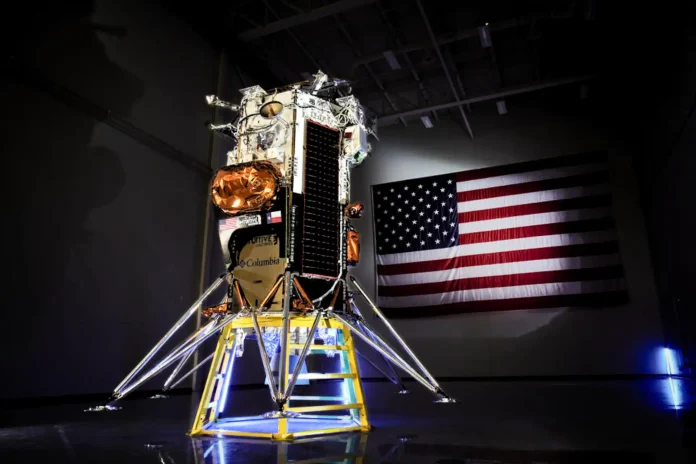On the lunar surface lies a testament to human ambition and the slowly increasing private space industry: Odysseus, also known as “Odie” as it was affectionately nicknamed by its creators, Intuitive Machines. While Odysseus moon mission has concluded, its impact goes beyond its brief tenure as the first private lander on the Moon.
Odysseus Moon Mission Touchdown
Odie’s journey wasn’t an easy landing. Upon touchdown on February 22nd, 2024, the lander settled at an unexpected angle. Despite this initial setback, Odysseus went against the odds and successfully completed a series of pre-programmed tests, transmitting valuable data and captivating photographs back to Earth. However, as the lunar night descended, casting the landing site in darkness, its mission was officially declared complete.
Hoping for a Lunar Recharge
The harsh lunar environment presented unique challenges for spacecraft. The weeks-long lunar night puts the surface into cold darkness, consuming the sunlight. Intuitive Machines, however, held onto some rays of hope, drawing inspiration from Japan’s SLIM lander. In January, SLIM had made a dramatic landing, flipping over on impact. But as the lunar day returned, the lander miraculously revived.
With this achievement in mind, Intuitive Machines eagerly awaited the lunar dawn for Odysseus. But after several days of anticipation, reality set in. Operators confirmed that its power systems wouldn’t reactivate. “This confirms that Odie has permanently faded after cementing its legacy into history as the first commercial lunar lander to land on the Moon,” stated Intuitive Machines on a social media platform (formerly known as Twitter).
Successful Results of the Mission
Despite the landing mishap and Odie’s ultimate silence, both Intuitive Machines and NASA consider the mission a resounding success. This public-private collaboration several several key advancements:
- Odie’s mission demonstrates the viability of private companies playing a big role in lunar exploration. This paves the way for a future lunar economy where private entities contribute to resource extraction, infrastructure development, and even space tourism one day.
- The successful landing of Odysseus marks the first American lunar touchdown by a robotic spacecraft since the Apollo 17 mission in 1972. This shows a renewed American commitment to lunar exploration, a stepping stone for eventual crewed missions to the Moon and beyond.
- It wasn’t just a technological achievement; it carried a vital scientific payload. The lander housed a suite of NASA instruments designed to enhance our understanding of the lunar south pole, a region targeted for future crewed missions under the Artemis program. This data will be instrumental in planning future lunar outposts and resource utilization adventures.
More Space Missions on the Horizon
Intuitive Machines aren’t done with space yet. They have two more lunar missions planned for 2024, contributing to NASA’s ongoing Commercial Lunar Payload Services (CLPS) initiative. This initiative promotes collaboration between NASA and the private sector, aiming to use private expertise and innovation to accelerate lunar exploration efforts.
The United States and its international partners envision a future with long-term settlements established in the lunar south pole region. This ambitious vision depends on using polar ice to produce drinking water and rocket fuel. This lunar infrastructure could be a refueling station for future voyages to Mars and beyond.
Odysseus Moon Mission’s legacy lies in its landing and symbolizing a new era of public-private collaboration. As humanity sets its sights back on the Moon and beyond, this mission serves as a testament to the perseverance that will propel us forward in this new era of space exploration.



